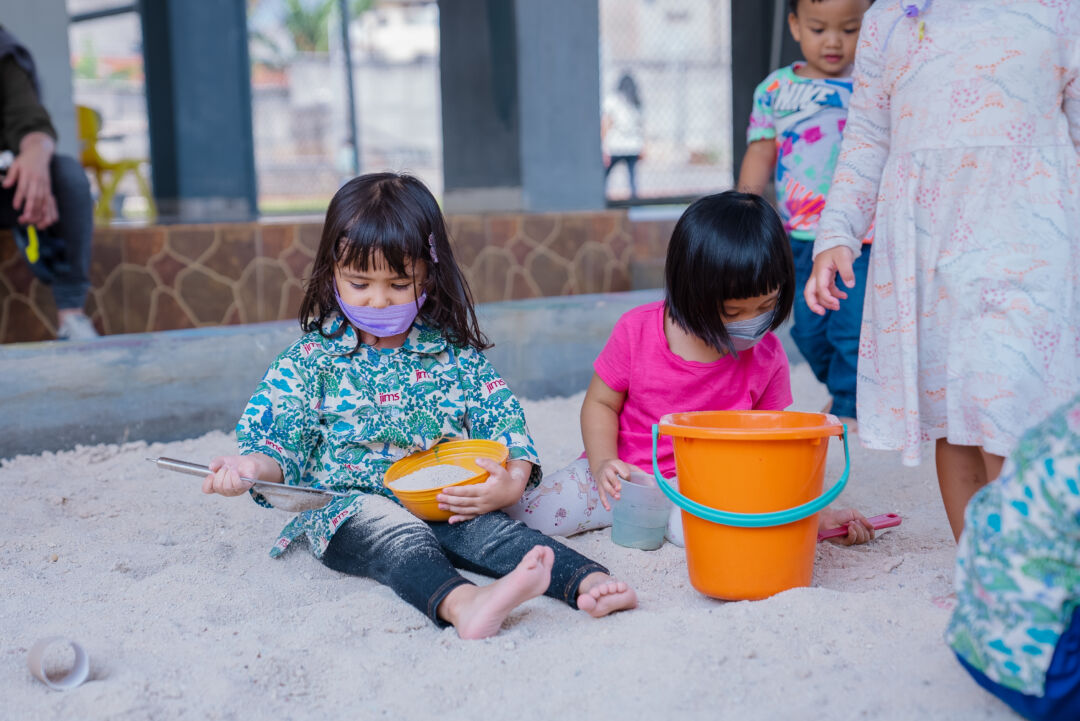
What is Social and Emotional Development?
Social and emotional development begins early in life. This is when children start to understand who they are, what they are feeling, and what to expect when interacting with others. It’s when they learn how to form and sustain positive relationships and how to experience, manage, and express emotions.
Social and emotional development is the process of learning the skills needed to make and maintain relationships, manage emotions, build healthy relationships, and demonstrate empathy.
Social and emotional development skills can help a child feel confident in building relationships, taking initiative to get their needs met, Provide positive social-emotional opportunities for your child. They will feel good about themselves and develop confidence. Your child will form secure relationships with others and ultimately will be able to focus and learn. This strong and healthy foundation will lead to future academic success.
How do children develop social and emotional skills?
In the school environment, we can observe the development of children’s Social and emotional development skills. Preschoolers need assistance in every activity to learn skills. New social-emotional skills or practice existing skills in the school environment. Here’s how to help kids develop social and emotional skills that are both enjoyable and mutually supportive.
- Be responsive to children’s attempts at interaction and build on what children say.
- Engage in frequent, developmentally appropriate social interactions with children and adults in your classroom throughout your daily experiences and routines.
- Follow each child’s lead, cues, and preferences.
- Include emotion-related words in conversations with children.
- Make books available that discuss feelings and social interactions.
- Ask children meaningful questions about their actions, interests, events, and feelings.
- Encourage children to use their words and talk to their peers when conflicts arise. Use developmentally appropriate language and provide conversation models and cues for children to follow if they need help solving a problem.
- Ensure you are sensitive to children’s unique needs, experiences, and backgrounds.
- Reach out to children’s families and be responsive to their beliefs and preferences.
Baca Juga: 5 components of social-emotional learning
5 Social Emotional Activities for Preschoolers
- Sing

Playing music while singing and having fun can naturally help a child’s Social and emotional development skills. So you can have fun making music with the whole family and know that you’re also supporting your child’s social and emotional growth.
- Feeling Check-In chart
Use this as a social-emotional check-in at the beginning of class to gauge how students feel. This activity helps students get in the habit of monitoring their emotions and gives you valuable information about your students’ moods.
- Go on a nature walk

Playing outside gives students the chance to explore the natural environment and have adventures. express themselves and build self-confidence, and more mess often means more fun!
- Make time for art

Children explore social-emotional skills during play. Art activities are great for introducing your child to new topics in a fun way. Art activities are fun for young children and are a great way to encourage creativity and help develop fine motor skills and spatial awareness.
- Role Play

Role-playing is an essential part of a child’s development because it builds confidence, creativity, communication, physical development, and problem-solving. As well as being a fun activity, it also allows kids to get into character and act out real-life roles or fictional shows.
Bergabunglah dengan Pengalaman Kami!
Menjadi bagian dari JMS bukan hanya untuk program belajar yang menyenangkan,
tetapi juga untuk mengembangkan masa depan mereka.


Berbagai Fasilitas Menarik di Sekolah Internasional di Indonesia says:
Inilah Berbagai Kurikulum International School di Indonesia says:
Rekomendasi Pekerjaan Freelancer untuk Mahasiswa - Rakamin Academy says:
Tips Memilih Sekolah Internasional Terbaik di Indonesia says:
Keunggulan Jakarta Multicultural School Sebagai Private School Terbaik di Indonesia says:
Anak Malas Belajar? Berikut Faktor Penyebab yang Harus Orangtua Ketahui - Seserina says:
Mengapa Sekolah Menengah Atas Internasional di Jakarta Menjadi Pilihan Terbaik untuk Masa Depan? - Hellodkids.info says:
Pahami Kurikulum Pada JMS Best International High School Jakarta says:
Alasan JMS Sebagai Best International High School di Jakarta says:
Inilah Fasilitas JMS International High School Terbaik Jakarta says: